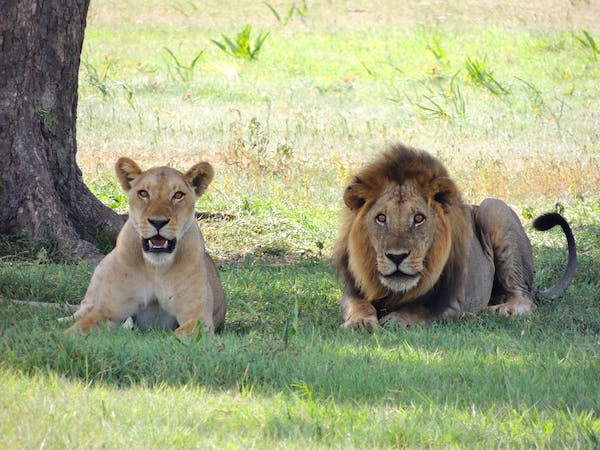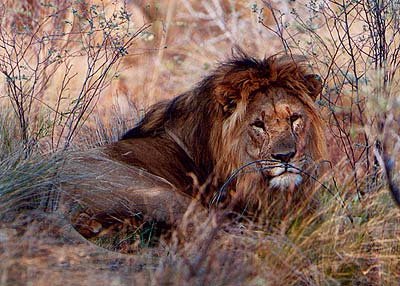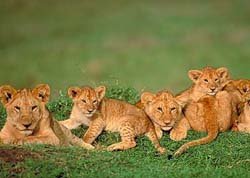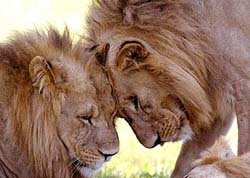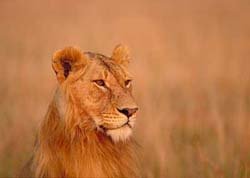The Panthera leo was first described by Carl Linnaeus in 1758. Between 2008 and 2016, the International Union for the Conservation of Nature (IUCN) Red List recognized two subspecies: P. l. leo for African lion populations and P. l. persica for lion populations living in Asia. However, in 2017, the Cat Classification Task Force of the Cat Specialist Group revised the names:
- l. leo – The nominate lion subspecies, including the Asiatic lion, and other lion populations in central Africa.
- l. melanochaita – This includes lion populations in east and southern Africa.
Numerous well-managed conservation areas host large lion populations, but even so, the IUCN Red List categorized them as Vulnerable. Only 20,000 Lions are present in Africa. Some experts believe that Lions may soon face extinction by 2050 if human protective efforts do not improve.
Its ten levels of scientific classification are as follows:
Domain: Eukaryota
Kingdom: Animalia
Phylum: Chordata
Class: Mammalia
Order: Carnivora
Suborder: Feliformia
Family: Felidae
Subfamily: Pantherinae
Genus: Panthera
Species: P. leo
The physical characteristics of a Lion
A Lion possesses a muscular, deep-chested body, short, rounded head, round ears, and hairy tuft at its tail end. This species is sexually dimorphic—adult male Lions have a distinct mane, while females don’t have. An adult male has a typical head-to-body length of 184-208 cm, whereas a female Lion (Lioness) measures between 160 and 184 cm. Its fur color varies from light buff to silvery grey, dark brown, and yellowish red. A newborn Lion has spots all over, which fade as it reaches adulthood.
Of all the felid species, the Lion is only rivaled by the Tiger in terms of weight, length, and height at the shoulder. They share similar skull structures, except the frontal region, postorbital region, and nasal openings. An adult female Lion weighs between 118 and 144 kg, whereas an adult male Lion weighs between 187 and 225 kg.
The distribution and habitat of Lions
Lions are present in scattered populations across sub-Saharan Africa. They prefer living in grassy plains, savannahs, and open woodlands with bushes and acacia trees that serve as shades. They do not dwell in rainforests and rarely enter closed forests.
The behavior of a Lion
Lions are the most social of all wild felid species, forming groups called “pride.” A group of male lions is called a “coalition.” Meanwhile, Lionesses form a stable social unit in a pride and ignore outside females. The number only changes with the births and deaths, although some females leave to live a nomadic lifestyle.
A single pride has an average of 15 lions, with several females and up to four males and their cubs. Prides of Tsavo Lions always have just one male adult. Male Lions get praised for their majestic manes, but the Lioness’ power is often overlooked. Female Lions do 85-90% of the hunting efforts for the pride, while the males protect the pride and their territory.
Meanwhile, Asiatic male Lions do not live with females in a pride, unless they are mating or they have a massive kill. Most Lionesses can already reproduce once they reach four years of age. They can mate with several male lions when they are in heat. The average gestation period is around 110 days. After this, the Lioness will give birth to a litter with one or four cubs in a protected den, which may be a reed-bed, thicket, or cave. Lionesses raise their cubs together.
The diet of a Lion
As apex predators, they have a broad prey spectrum, humans included. They hunt for food every few days. Their routine mainly consists of hunting, eating, and resting. They prey on medium-sized mammals such as deer, African Buffaloes, antelopes, wildebeests, and zebras. They also eat on other animals that have already been killed by other wild predators such as Hyenas. Lions also hunt Common Warthogs depending on availability, and avoid fully-grown adult Elephants, Hippos, and Rhinos, as well as small animals like Monkeys, Hares, and Hyraxes.
WILDLIFE PARKS AND RESERVES WHERE THIS SPECIES IS FOUND:

